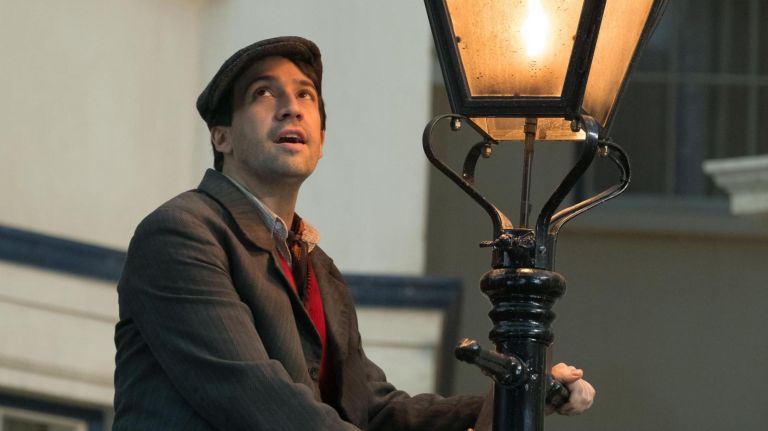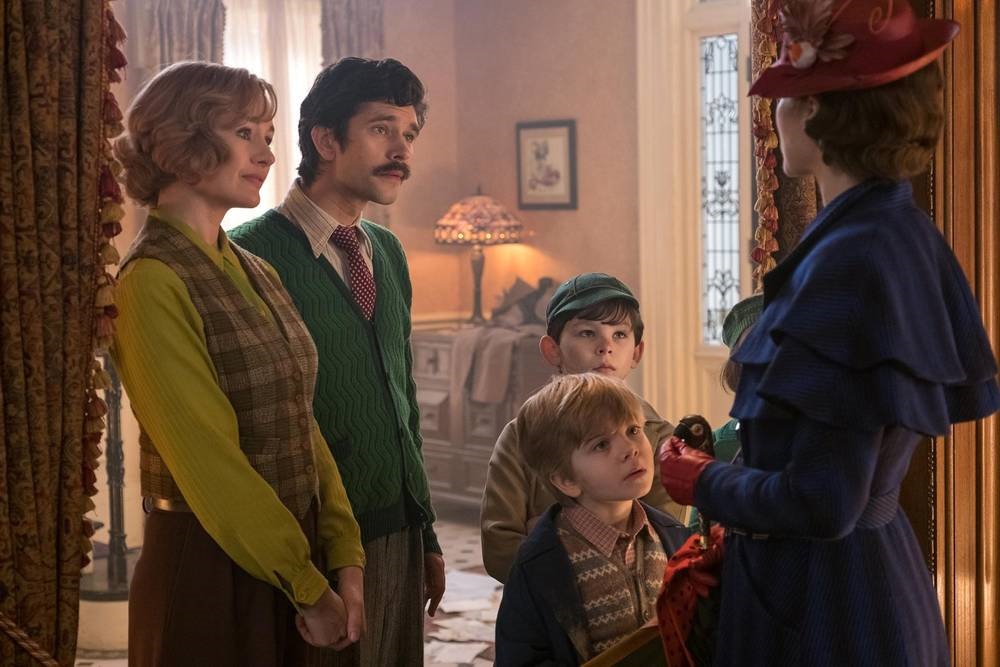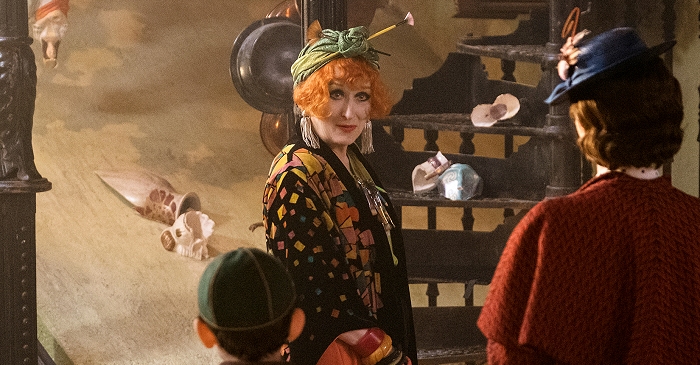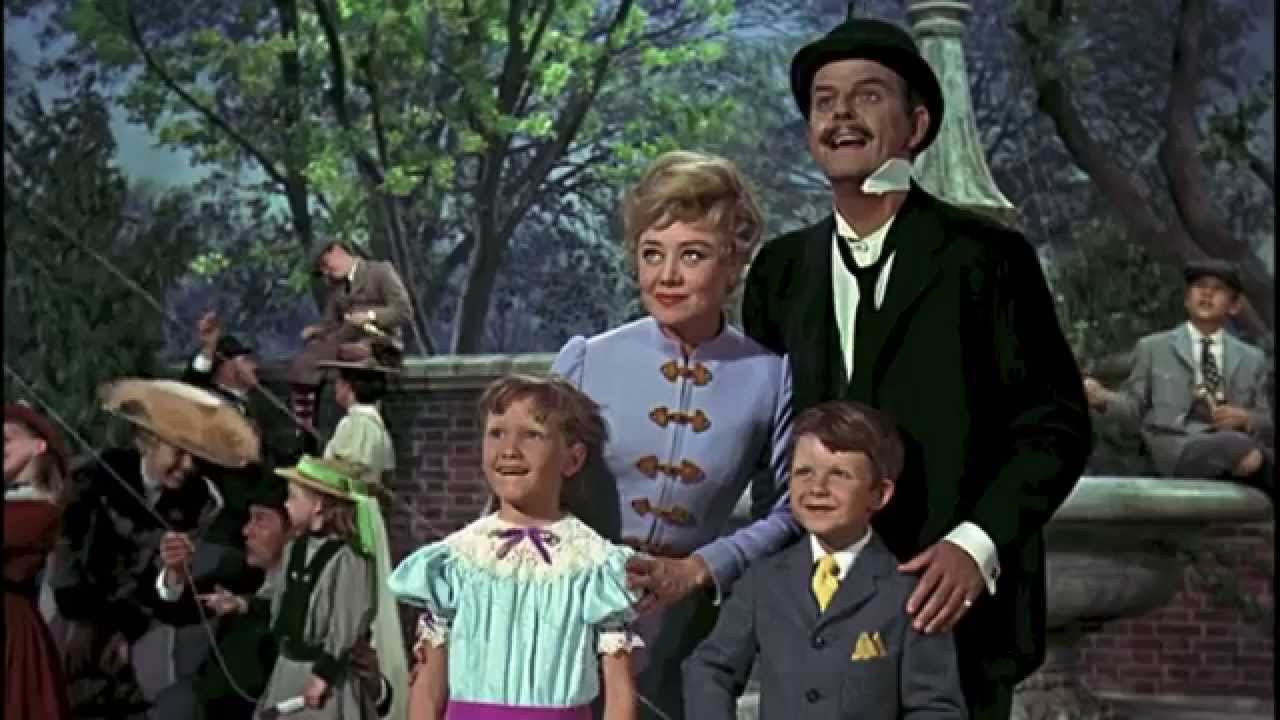Released 54 years after the original, Mary Poppins Returns is Disney’s attempt to recapture the magic they had with one of the most beloved films of all time. The umbrella flying nanny has become so popular that even people who have never seen the original film know her by name. To their credit, Disney found the perfect casting of the titular character with Emily Blunt. She and Lin-Manuel Miranda are extremely talented and it really shows. The film also has some very stunning visuals. But aside from that, much of it feels contrived, and it struggles with basic storytelling. So let’s dive into the very mixed bag that is Mary Poppins Returns.

Picking Up Decades Later
The film opens with Jack (Lin-Manuel Miranda) playing the soft rebooted version of Dick Van Dyke’s Bert as he sings a song about London. From there the story picks up years after the events of the original as an adult Michael Banks (Ben Winshaw) struggles to raise his three children after the passing of his wife. His sister Jane (Emily Mortimer) is around to help, but she’s also busy with labor activism, something that we never actually see her do and is probably only in the film to draw a comparison with Mrs. Banks in the original.
Michael is in over his head with the children, despite them being much better behaved than he and his sister were in the original. The film’s only real semblance of a plot comes when the bank threatens repossession of his house in a week if he can’t pay back a loan he took out from them. After that, the children find their father’s old kite and when they fly it in the park, Mary Poppins (Emily Blunt) makes her grand appearance.

Creative Visuals
To be fair, the film becomes much more imaginative and inventive once Mary Poppins shows up. While giving the children a bath, she takes them to an entire underwater world that rivals Aquaman. However the greatest visual spectacle of the entire film comes when she transports the children into a fancy china bowl with an entire universe inside. They meet talking animals pulling a carriage and even attend a music hall to catch a show, one which Mary Poppins and Jack participate in.
And it’s in areas like this the film really shines. Both Blunt and Miranda are natural performers and they do the very best they can with the material they’re given. It also should be noted that the film very successfully replicates the sense of wonder from blending live action and animation. It really feels like a nice callback to see traditional 2D animation being used as well, especially in a cinematic landscape where hardly any 2D films ever get released anymore. Scenes like this give the viewer a taste of classic Disney. While these aspects are spectacular, the rest of the film doesn’t hold up as well unfortunately.

Doesn’t Know How to Tell a Story
While Mary Poppins does take the Banks children on a multitude of fun, musical adventures, there isn’t really any momentum or narrative thread to hold it all together. Each place they visit and the events that transpire within have no bearing on anything else for the rest of the film’s duration. This results in it feeling less like a linear storyline and more like a series of unrelated vignettes. They can be entertaining, but the overall film lacks central pacing. The only plot point that seems to understand the narrative structure is that of Michael trying to locate the certificate of his father’s bank shares so that he can pay off the loan and keep his house.

While the exploits of Mary Poppins and the children are great fun, most scenes with the adult Banks feel dull and without an ounce of subtlety. Winshaw and Mortimer are usually great in whatever they’re in, but here they deliver their lines with all the awkwardness of a high school play. Colin Firth also pops up as a villainous banker who is so over the top he feels like he should be in one of the cartoon sequences. This all leads to a typical happy ending which fixes everyone problems in the most contrived way imaginable. Without giving anything away, the solution to Michael Banks’ problem seemingly comes out of nowhere and easily could have happened much earlier in the story.

Missing the Whole Point
The original Mary Poppins is remembered fondly for its technical marvels and unforgettable songs, but that’s not what made the film itself special. What made it special was watching the Banks family come together. Mary Poppins came at a time that the children lacked guidance and their workaholic father lacked family priorities. In the end, as they sing “Let’s Go Fly a Kite”, it’s a truly beautiful moment of emotional catharsis as the family is together and they’ve learned to appreciate each other. That was why Mary Poppins left, because her work was done.

In this film, she shows up during a time of money troubles and the whole problem is fixed by by way of Deus Ex Machina. It’s not a terrible film, but it’s not a great one either. While it does boast a few strong performances and brilliant aesthetics, it lacks the overall charm, poignancy, and memorable songs of the original. It strives to become a classic, but instead feels like a cheap imitation.




